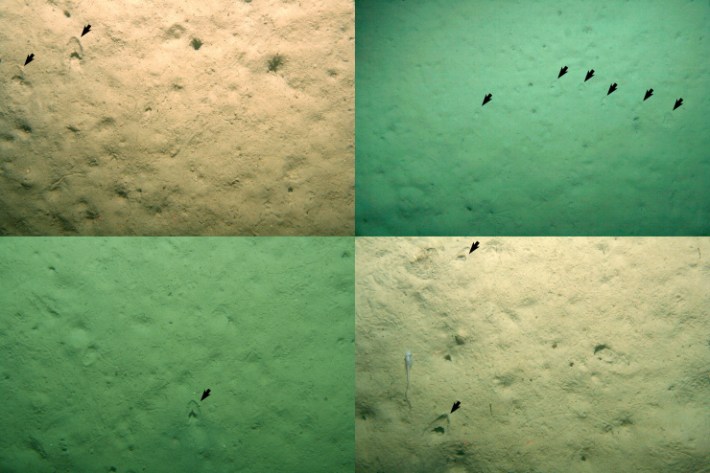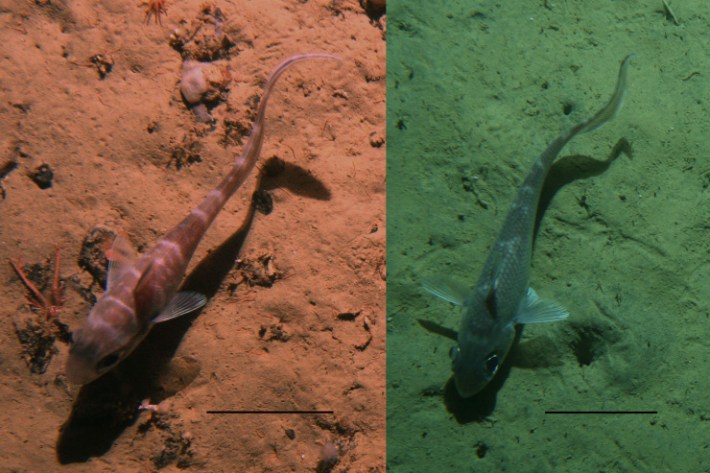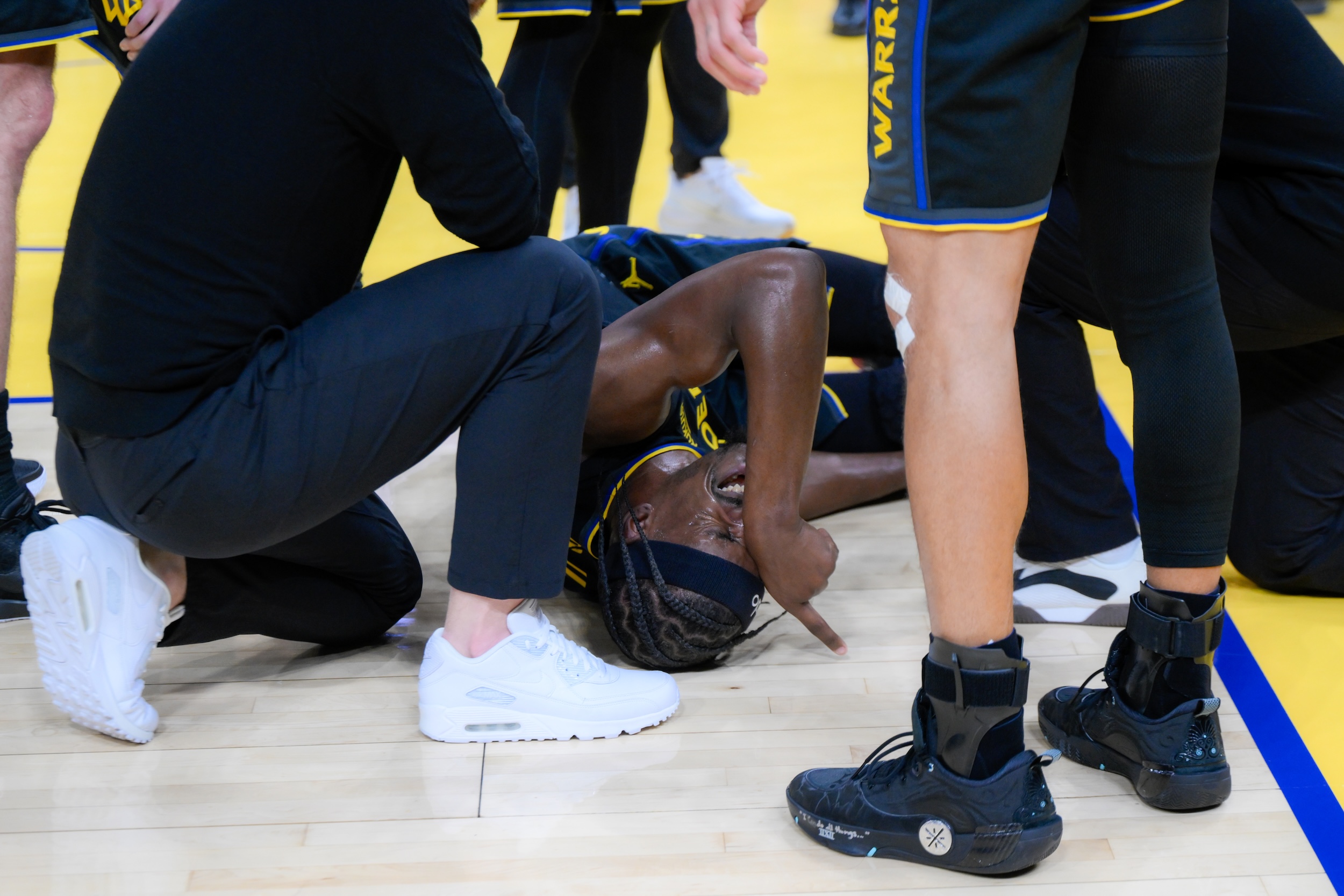In 2013, a deep-sea survey of a submarine ridge to the east of New Zealand uncovered a series of imprints on the seafloor shaped a little like horseshoes. Barring the possibility of undetected deep-sea stallions, there are no hooves in the ocean. The marks left scientists stumped.
Sadie Mills, the invertebrate collection manager at the National Institute of Water and Atmospheric Research, or NIWA, in New Zealand suspected the marks were lebensspuren—life traces left by a kind of fish commonly known as a grenadier (catering to explosive enthusiasts) or a rattail (catering to teenage boys). After careful consideration of the readership of this blog, I have decided to use the latter common name. Like many other deep-sea fish, rattails look somewhat like menacing tadpoles. They got this nickname a long time ago, when some scientists thought their long, slender tails resembled those of rats. But this comparison, the deep-sea ecologist Jeffrey Drazen explained in an interview, probably came from scientists who were examining dead, trawled specimens of rattails whose tail scales were rubbed off in transit.
Rattails nose around deep-sea sediments for food, and Mills wondered if the horseshoes in the mud could be traces of this foraging, according to a NIWA press release. In the 1970s, scientists observed a rattail at depths of more than 13,000 feet rooting around with its head in the ooze. And some rattails have extendable, horseshoe-shaped mouths that can dig around the seafloor like a shovel. Mills contacted her colleague, fisheries scientist and rattail expert Darren Stevens, to take a look. There are more than 320 species of rattails swimming in deep oceans around the world, ranging from the seven-foot-long giant grenadier to the diminutive five-inch slender membranehead, which also happens to be the worst common name thus far.

To pinpoint which species of rattail might have left the marks, Stevens overlaid the heads of different species over the most pristine sediment marks, which were in the shape of an iron with a central divot, perhaps indicating a bite. Surprisingly enough, the horseshoe imprints were a close match to a few species of rattails in the genus Coelorinchus. Although many of the imprints were too fuzzy to pin down to particular species, the scientists were able to pair two bite marks to specific species: the oblique banded rattail Coelorinchus aspercephalus and the saddle rattail Coelorinchus biclinozonalis, both just under 20 inches long. To illustrate their work, the researchers mocked up a series of gradually morphing images between the bite marks and the two species of rattails that would make David Mattingly proud.

The scientists did not actually observe any rattails creating these marks or swimming alongside them, but their theory is the strongest lead scientists have on the ocean's horseshoe-mark-maker. Their research is published in a new paper in the journal Deep Sea Research Part 1: Oceanographic Research Papers. They suggest the rattails may be targeting prey buried in the sand, such as worms, crabs, and other crustaceans.
Another day, another mysterious deep-sea lebensspuren (probably) solved! If we can learn anything from this saga, it's that the world is full of mysteries, not all of which are holes. No one will want to eat a fish named "rattail", which is why it was renamed "grenadier." And more often than you might think, the best answer to the question "who did this?" is a cool-looking fish.






